Reviews of cucumbers "Siberian garland", description of the variety, requirements for care
Each new season, land owners are faced with the question: what kind of vegetable crop to choose? Many are attracted by a hybrid called "Siberian Garland" - cucumbers with a high yield. They are quite easy to care for, have excellent taste and do not taste bitter. We offer detailed instructions for growing cucumbers of this variety, tell and show how they look and what summer residents say about them.
Description of the variety with photo
Such an unusual name "Siberian garland" was given to the plant because of its appearance - its lashes are branched, densely covered with miniature fruits, which involuntarily brings up an association with New Year's decoration. What are the distinctive features of this cucumber variety?
- Origin.
Seeds of the Siberian Garland are marked as f1. This means that this variety is a hybrid obtained as a result of crossing. First generation hybrids are distinguished by their great endurance and resistance to diseases. But you cannot collect seeds from them yourself - completely different plants will sprout.
- Growth.
The variety is undemanding, it can be grown in almost any climatic zone. Resistant to low temperatures, drought, disease. After the emergence of seedlings, it begins to bear fruit on the 43–45th day and ends with the first frosts. The bush is powerful, branched, medium-sized dark green leaf. The ovary is bunchy, 5–8 in one node.
- Productivity.
Requires correct formation and regular collection of fruits. With this care, it gives up to 400 cucumbers per bush. The yield per square meter is 40 kg.
- Fruit appearance.
Cucumbers "garland" have a rich green color at the base, which smoothly turns into light green to the top. Pubescence light, soft spines. The size of the fruits ranges from 5 to 8 cm, and the weight is from 30 to 50 grams (medium gherkin). Even if the cucumbers are not picked in time, they do not grow further.
- Taste qualities.
Fruits are dense with juicy pulp, sweet, crunchy. No bitterness (genetic trait). The variety "Siberian Garland" refers to universal - suitable for consumption both fresh and harvested (pickles, marinades, etc.).
Pros and cons
Compared to many other varieties of cucumbers, "Siberian Garland" is extremely unpretentious.
Explicit advantages:
- high yield - up to 40 kg / m2;
- immunity to diseases (peronosporosis, powdery mildew, brown spot, tobacco mosaic);
- fruit taste (crunchy, sweet);
- long-term fruiting before frost;
- self-pollination;
- early maturity;
- unpretentiousness to growing conditions.
Despite its promising benefits, there are also downsides to the variety. These include:
- the relative high cost of seeds;
- the need to properly form a bush and regularly harvest;
- inability to collect seeds for further use.
Undoubtedly, the “Siberian Garland” has more positive qualities. Confirmation of this is the reviews of summer residents, who managed to fall in love with the new variety.
How do they say about the variety on the Internet
Those who have already managed to grow the "garland" were generally satisfied. The characteristics of the variety are fully consistent with the description. However, it was not without its drawbacks. In 2015, a number of seed producers had a re-grading and instead of elastic pimpled gherkins, summer residents grew smooth and pot-bellied fruits, more suitable for salads.
Reviews about the harvest of cucumbers "Siberian Garland" on the Internet:
Landing nuances
You can plant a plant in two ways: seed and seedling.In the first case, it is recommended to wait until the end of May, when the nights will no longer be cold and the soil warms up to 15 degrees.
Hybrid seeds do not require any special preparation, but you can play it safe and follow these steps:
- Treat the seed with a weak solution of potassium permanganate.
- Dip the seeds into a shallow container with warm water and leave for 2 days (the ones that have emerged can be safely thrown away - the sprouts from them will not hatch).
- For the purpose of hardening, you can wrap the seeds in a damp cloth and keep them in the refrigerator for two days. In this case, we skip the second point.
After germination, the seeds are deepened 1.5 cm into the soil (no more than 2 cm!). The optimal row is 15–20 cm, a gap of 6–8 cm is left between the plants. It is recommended to cover the bed with a foil before emergence. As it grows, the shelter is removed for several hours, and then removed completely.
Planting seedlings is carried out according to a different principle. The seeds are planted in separate pots with soil starting in mid-April. To do this, take a universal soil or mix peat and sawdust in half with humus. The containers must be placed on the sunny side so that the plants do not stretch out. A few days before disembarking under the open sky, the pots are taken out for 3-5 hours outside - hardened. After a month, the seedlings are carefully removed along with a lump of earth and moved to the garden bed, observing the rows - 2 bushes per square meter (60 by 15 cm). The root is deepened into the ground along with the cotyledons, lightly tamped and watered abundantly.
Care features
Taking care of Siberian Garland cucumbers is no more difficult than other varieties. Care begins with the correct preparation of the beds - fertilization and installation of trellises. Then the plants are watered, fertilized several times and at first they form the bush correctly.
Fertilizer
If possible, the garden bed is prepared for planting in the fall: they cover the ground with plant remains, leaves, branches, and put cow dung on top and cover everything with foil until spring. The thickness of each layer is approximately 10 cm.
You can also fertilize in the spring, 1-2 weeks before planting cucumbers. To do this, use nitrophosphate and sieved ash (100 grams and 1 liter per square meter). A 15 cm layer of soil is placed on top. After that, the ground is thoroughly watered and hermetically covered with a film.
If it was not possible to prepare in advance for planting, fertilizers are applied directly to the holes. For this, ash and carbamide are used - 30 and 5 g, respectively, for each bush.
Further, the following mixtures are prepared for feeding the plants:
- 50 grams of superphosphate, 25 grams of carbamide per 10 liters of water;
- 1 kg of fresh cow dung per 8 liters of water;
- 5-7 grams of dry ammophos per square meter of land;
- 4 glasses of wood ash, infused in 10 liters of water for 4 days;
- 1 kg of weeds and 10 grams of carbamide, infused in 6 liters of water for 3-5 days;
- 10 grams of potassium magnesium, 10 grams azofoski for 10 liters of water;
- 1 kg fresh yeast (crushed) into 10 liters of warm water;
- rotted cow manure with water in a ratio of 1 to 10;
- 30 grams baking soda 10 liters of water.
The first time the plants are fed 15 days after planting in the ground, and then every 10-16 days. It is recommended to alternate folk fertilizer recipes with chemical ones.
Watering and weeding
Cucumbers are a moisture-loving culture. In addition, they do not tolerate the neighborhood of weeds. Therefore, the beds need to be weeded and watered regularly - before flowering every 4 days and then every 2 days. To retain moisture and reduce the growth of other plants, mulching is recommended (with fresh green mass or humus).
The best time to water is evening. It is allowed to use only settled water heated in the sun. In cold weather, cucumbers are not watered, otherwise the root system may rot. Conversely, if there is heat and drought, the plants are supplied with water every day. "Siberian Garland" loves watering in the beds from a watering can and drip. You can also fill grooves.The main thing is not to pour water on the roots, otherwise they may become bare and dry.
Formation
The large "Siberian garland", like other bundle varieties of cucumbers, is formed into one stem so as not to overload the plant. The bottom 3-4 stepson are removed to the point of growth. Starting from the 5th stepson, 2 first sheets are left, and the rest is carefully cut off (no more than 7 cm at a time). It is also important to remove all barnacles and tendrils in a timely manner. When the plant reaches 20-25 cm in height, it is wrapped around the trellis. After reaching a height of 2 meters, the "Siberian garland" ceases to pinch. An illustrative example of the formation of a bush:
To get a good harvest, it is important not only to responsibly choose a crop variety, but also to take into account care recommendations. The place for any cucumbers should be sunny or slightly shaded. They grow well on the ground where onions, potatoes, tomatoes or cabbage previously grew. If you grow the "Siberian garland" according to all the rules of agricultural technology, it bears fruit actively, the cucumbers are juicy and fully correspond to the description.
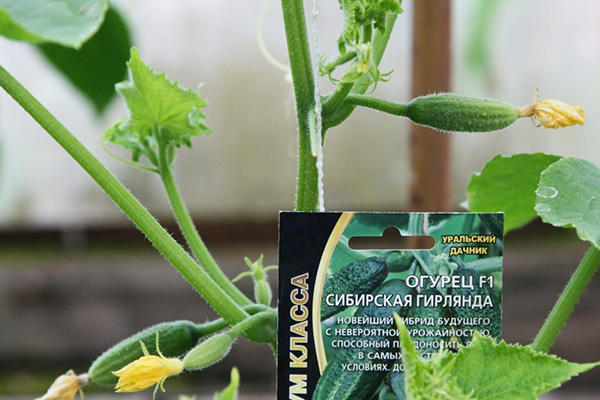
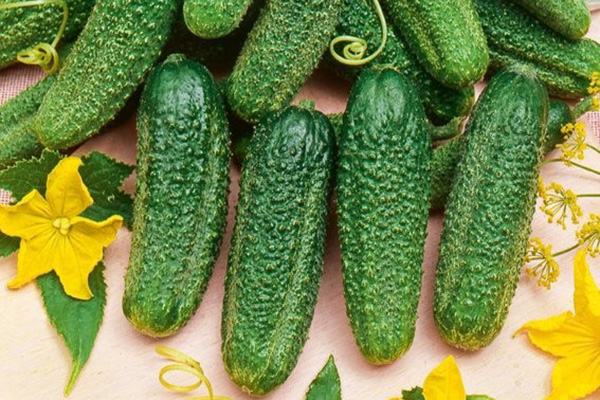
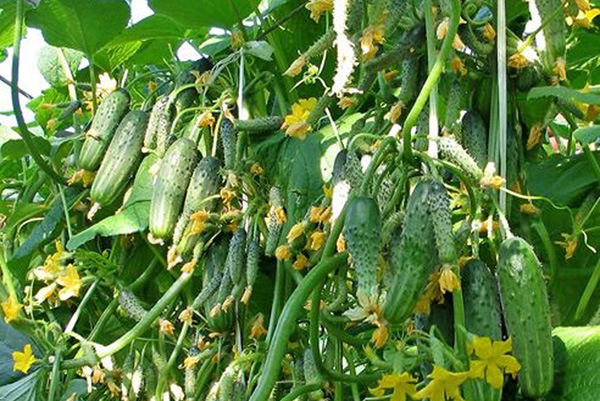
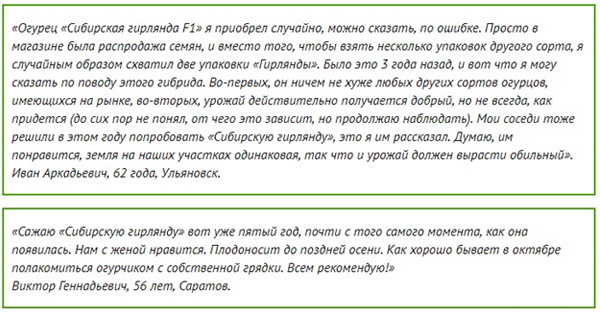



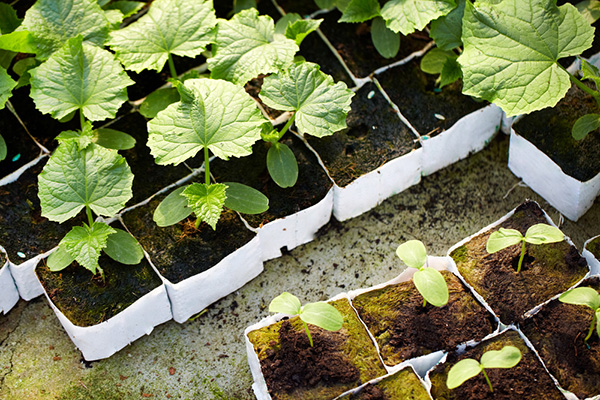
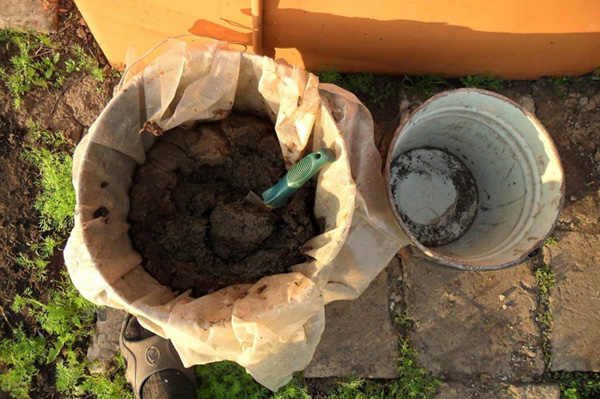
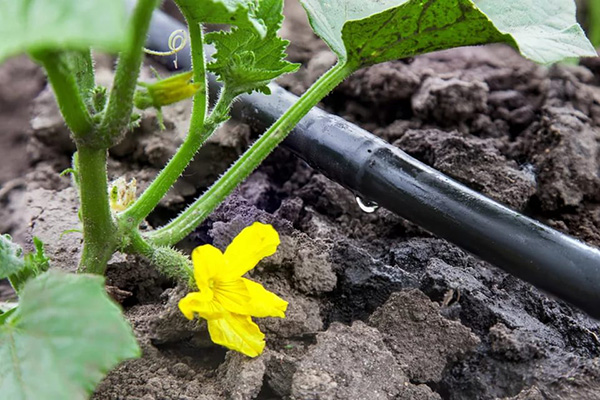
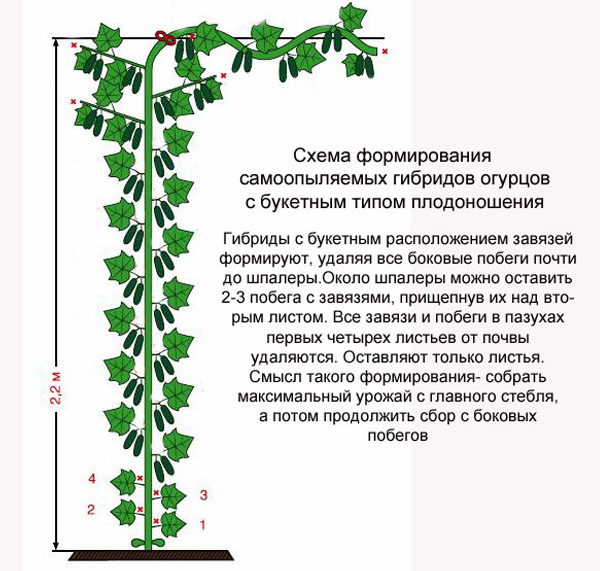
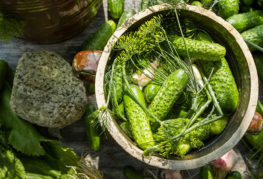
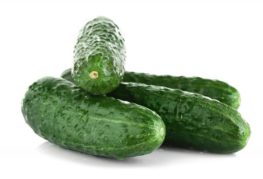
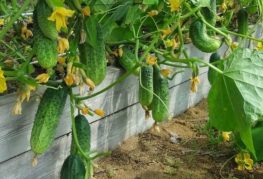


and will be published shortly.